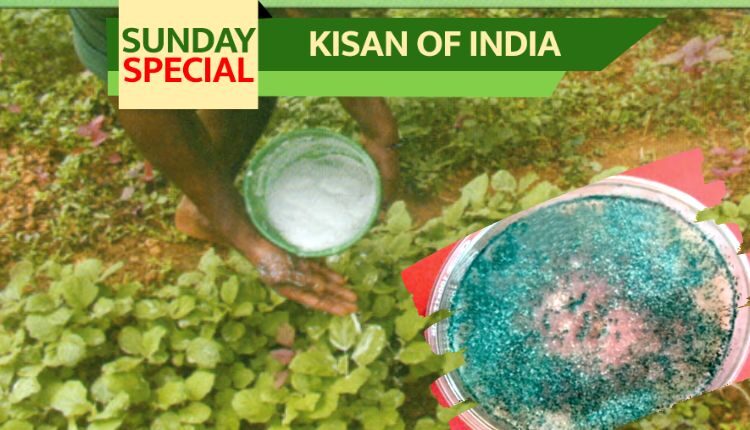Know method of home production and use of Trichoderma
Trichoderma is the protective shield of plants, Apart from seed treatment, the use is also like a panacea for soil
Many species of fungus or mould are found in the soil. Some species of fungi are enemies of crops while some are excellent friends. Trichoderma is a species of fungus that not only kills enemy fungi, but also helps the roots to absorb many nutrients from the soil by making them soluble. It is easy to save plants from many diseases. It also plays the role of organic fertilizer by accelerating the growth of plants. Trichoderma thrives in soil and are also found freely on organic residues.
The use eliminates the need for chemical fungicides in agriculture. The biggest drawback of chemical fungicides is that apart from enemy fungi, friendly fungi are also harmed by its use. That’s why the use of It is considered nature and environment friendly and safe. There is no visible side effect of this. Its 6 species are known. There are two types of friendly fungi named ‘Trichoderma viridi’ and ‘Trichoderma harzianum’ which are found in abundance in the soil.
Benefits
It keeps plants disease free by inhibiting or killing the growth of pathogenic organisms and activates systemic acquired resistance to diseases. By improving the chemical process of plants, it accelerates the activities of making disease resistant and antioxidant. Its use reduces dependence on chemical drugs, especially fungicides, and reduces the cost of cultivation.
Plant growth increases when Trichoderma is added to the soil. It speeds up the decomposition of organic matter. It solubilizes phosphates and other micronutrients so that the roots can easily take up nutrients.
Its use increases the amount of deep roots in grass and other plants. They become drought tolerant. The addition is also excellent in bioremediation of soil polluted with pesticides. It has the ability to destroy pesticides of organochlorine, organophosphate and carbonate group.

Mechanism of action
The area of soil that surrounds the roots of plants is called the rhizosphere, through which the roots get nutrients and breathe. Trichoderma is one such biological fungicide, which acts as a protective shield for plants against various fungal diseases that reach the roots from the rhizosphere. That is why it is often advised by agricultural scientists to use Trichoderma for seed treatment.
Trichoderma solubilizes phosphates and other micronutrients present in the soil so that plants can easily take them up. They also help in increasing the amount of antioxidants in plants. This increases their immunity. By mixing Trichoderma in the soil, the amount of mineral elements found in the fruits also increases rapidly and they become full of nutrients. Trichoderma keeps the plants disease free by killing all the pathogenic organisms.
Home production
In the domestic method of production of Trichoderma, cow dung cakes are used. For this, grind about 30 kg of cow dung cake in a shady place and make it fine. Make a thick paste by adding water to it. Then mix 60-65 grams of pure culture of good quality in the paste. Now cover this pile well with an old jute sack and keep it wet by sprinkling water on the sack from time to time.
After 12 to 16 days, mix this cow dung paste well with a shovel and again cover it with a wet gunny bag and maintain constant moisture. In about a month, a green mold develops on the entire heap. Now this pile can be used like high quality Trichoderma. To produce it again, some part of the already prepared Trichoderma should be saved and kept safe, so that next time the mother culture does not have to be bought from outside.

Disease management
The use of Trichoderma is very beneficial in the prevention of the following diseases of crops.
- Disease of pulses and oilseeds
- Ginger root rot
- Cotton picking, dehumidification, drying, root thawing
- Beet Humidification
- Kaler Raat in Peanuts
- Corm rot in flowers
- Dampness, root rot, collar rot in vegetables
Methods of using
In addition to above-ground crops, Trichoderma is also used to treat seeds of tuber crops that grow below ground. This process is called seed priming and before sowing the seeds are coated with a special solution and dried in a shady place. By using Trichoderma in seed priming, proper treatment of soil and plants is also done in the nursery. By spraying it on the plants, they can be saved from many diseases.
In seed treatment: Seeds do not need to be soaked in water after treatment with Trichoderma. For seed treatment, usually 5 grams of Trichoderma powder is added per kg of seed. This powder easily sticks to the seeds because it contains carboxy methyl cellulose. After sowing, with the setting of seeds in the field, it also surrounds the roots growing from all sides in the soil like a protective shield so that the enemy fungi cannot reach them. This protection remains till the last stage of the crop.
In soil treatment: One kg Trichoderma powder is mixed with 25 kg cow dung and kept in a shady place for a week so that enough Trichoderma grow. Then this mixture is sprinkled in one acre field before sowing or last ploughing. If there is a problem later in the crop, Trichoderma powder can also be poured by making a pit or groove around the trees, so that they can easily reach the roots of the plants.
In seed priming: For seed priming with Trichoderma, make best cow dung slurry (slurry). For this, mix 10 grams of good quality Trichoderma culture per litre of slurry and then dip about one kilogram of seeds in it. After a while, take it out and let it dry for a while in a shady place, then use it for sowing. This process must be adopted especially before sowing of cereals, pulses and oilseed crops.
Spraying on leaves: For the prevention of certain types of diseases like leaf spot, blight etc., spray 5 to 10 grams of Trichoderma powder per litre of water when the symptoms of the disease appear in the plants.
In root treatment: Mix 250 grams of Trichoderma per 10 to 20 litres of water and keep the roots, tubers, rhizomes or cuttings of plants to be transplanted in this solution for 15 to 30 minutes. Then plant in the field.

Precautions
Trichoderma culture should be purchased from certified institutions or companies only. The moisture level in it should be up to 8 percent and the pH value should be 7. Trichoderma culture should not be more than six months old. After treatment with Trichoderma, do not let direct sunlight fall on the seeds and keep them in a shady and dry place. Never use Trichoderma with any fungicide chemical.
This destroys the biological fungicides present in Trichoderma and loses its effectiveness. After mixing in any organic manure, do not keep Trichoderma for a long time, rather put it in the fields as soon as possible.
No chemical fungicide should be used for 4 to 5 days after using Trichoderma in the soil. Suitable moisture is very essential for the growth and survival of Trichoderma. That’s why don’t use it even in dry soil. The seeds treated with it should not be kept in direct sunlight. Cow dung treated with Trichoderma should also not be kept unusable for a long time.
Contact us: If farmers want to share information or experiences related to farming with us, then they can do this by calling us on the phone number 9599273766 or by writing an email to [email protected] or by sending your recording. Through Kisan of India, we will convey your message to the people, because we believe that if the farmers are advanced then the country is happy.



